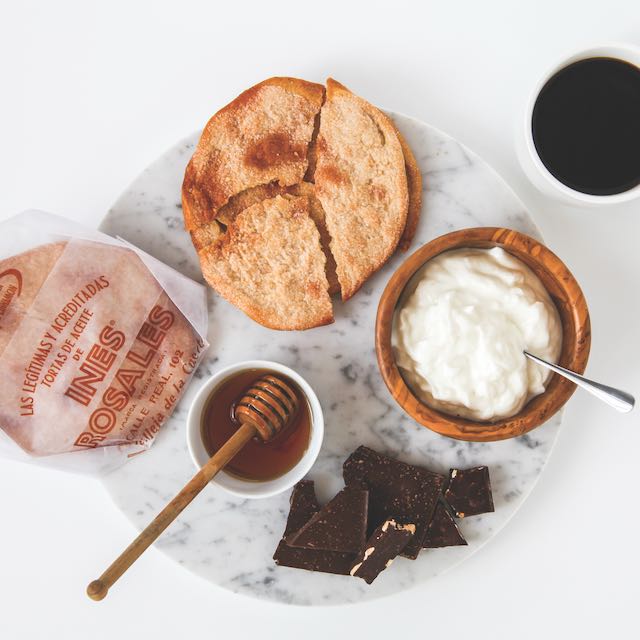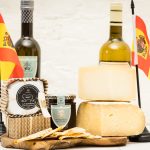Excerpt from Ari’s Top 5 enews
Traditional treats handmade in southern Spain since 1910

Back in 1910, in the small town of Castilleja de la Cuesta, Inés Rosales started to make olive oil tortas by hand. At the time, the town would have had a population of a couple thousand. Seeking a way to make a living, Inés Rosales baked a basketful of her olive-oil tortas, and then carried them herself, an hour’s walk, all the way to the Plaza de Armas train station in Seville. There she sold them to passengers as they got on and off the train, and also to hungry family members waiting for their loved ones to arrive. The Seville train station, at that time, was quite majestic. Modeled off a part of the Exposition Universelle in Paris in 1867, the building was designed in 1889 and completed twelve years later in 1901. By the time Inés Rosales started selling her tortas in 1910, Seville’s station was already a well-respected landmark in the city.
The old station was torn down about 30 years ago, but the tortas that Inés Rosales’ descendants make remain a well-respected tradition in the area. A whole lot more of them are made though—you can buy Inés Rosales’ tortas today in over 30 different countries and over 400,000 get made every day! The tortas are still, remarkably, made completely by hand and wrapped in the same wax paper Inés Rosales was working with all those years ago. While the outer package has been updated to look more modern, once you tear open the wrapping, you’ll be transported back to the early years of the 20th century. The design of the label, the wax paper, and the tortas themselves are almost exactly as they were back in that era. Round flat “biscuits,” about four inches across, with a gently uneven surface, they’re only slightly sweet but they’re hugely flavorful. They’re one of those baked goods that are superb with both savory and sweet applications. You can eat them with cheese, cured ham, chorizo, or salami. They’re a particularly good pairing with the Creamery’s Manchester cheese. Or you can enjoy one with your morning coffee as I’ve been doing of late.
The tortas are a great example of what olive oil baking can be. While we’re mostly used to baking with butter here, in the olive oil-producing regions of the Mediterranean—of which Andalucia is one of the most important—olive oil is the main fat for baking. (For many years now we’ve been making the Olive Oil Cake that we learned from the Mahjoub family in Tunisia.) Over a quarter of each torta is extra virgin olive oil from the region! Add flour, sugar, and spices, and that’s the whole ingredients list. To this day, the tortas are all hand-patted by skilled women bakers. Longtime export manager Lucía Conejo-Mir, who I ran into at the American Cheese Society conference last month, says that if you were to bring a box back to the factory, each artisan would be able to tell you the ones she had made. As Lucia explains, “Each lady that hand-pats our tortas with her skilled hands, has a similar technique but unique imprint. Sometimes you can even see the shape of a hand in the finished torta.” Making the tortas effectively is not an easy skill to master. Word is that it takes a new staff member a good six months to learn, since the dough is apparently quite sticky and not easy to work with.
Lucía Conejo-Mir reminds me that each Inés Rosales torta isn’t just something good to eat; it’s actually an invitation to mindfulness:
The only proper way to eat a torta is to be present. Enjoy the moment of unwrapping the torta, cutting it into pieces, and sharing it with somebody. It’s the ritual, it’s the only right way to eat the torta. As for what you pair it with, whatever pleases your senses. Tortas are a ritual, a moment of tranquility, something to be enjoyed, it’s kind of the Spanish lifestyle. Whenever we work, we work, but we work to live. We don’t live to work. So when we’re living, we ARE living, and we try to be present and we try to enjoy the moment.



